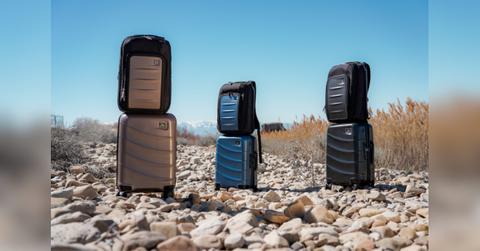 NEWS
NEWSThe Baggage Battle: What Separates a Carry-On From a Personal Item?

July 29 2025, Published 1:54 a.m. ET
At airport gates around the world, a small but consequential drama plays out daily: passengers arguing over whether a bag qualifies as a carry-on or a personal item. For travelers squeezed by tightening airline policies, this distinction can mean avoiding an unexpected fee, a forced gate check, or simply being able to keep one’s belongings nearby. As airlines increasingly monetize every inch of space, travelers face a shift in definitions - one that has quietly transformed cabin baggage into a contested frontier.
Why It Matters
Airlines have long framed the carry-on versus personal item distinction as a matter of practicality and safety. But over time, it has become a lucrative revenue stream. What counts as a carry-on varies from airline to airline, and sometimes even from gate agent to gate agent, creating confusion and frustration for passengers who simply want to travel efficiently.
Meanwhile, the baggage industry has scrambled to keep up. Brands now face not only consumer demand for durability and style but also for bags meticulously engineered to navigate the ever-changing rules of air travel. In this environment, the seemingly simple question of what makes a bag a carry-on or a personal item has become deeply intertwined with business strategy, consumer behavior, and design innovation.
The History Behind the Distinction
Decades ago, the distinction barely mattered. Checked baggage was often included in the price of a ticket, and travelers could board with a briefcase or small overnight bag without issue. But after airline deregulation in the late 1970s, fares fell and airlines looked elsewhere for profit, eventually discovering that restricting baggage allowances could both cut costs and drive ancillary revenue.
By the early 2000s, “personal item” became formalized in airline policies as a separate, smaller category distinct from the larger carry-on bag intended for the overhead bin. Yet while most airlines now post clear dimensional limits - typically around 22 x 14 x 9 inches for carry-ons, and something smaller for personal items - enforcement remains uneven, leading to traveler anxiety and last-minute confrontations.
Duravo: A New Approach
For some companies, this friction represents opportunity. Duravo, a relatively young American luggage brand, was founded by Dan Cooper and Matt Muhr to engineer a better bag—one built not just for strength and style but explicitly to navigate the baggage minefield.
“We recognized that travelers are caught in a game they can’t win—the airlines keep redefining what counts as a personal item or carry-on, but the industry hasn’t innovated fast enough,” says Cooper.
Cooper and Muhr didn’t come from the traditional luggage world. Their backgrounds in developing gear for tactical and ballistic uses gave them insight into high-performance materials not typically seen in travel goods. Their breakthrough: Flexshell™, a self-reinforced composite material from Germany, previously used in professional sports equipment, military gear, and automotive parts.
“Our aim was to take the toughest materials and engineer a suitcase that travelers could depend on without having to think twice about whether it would qualify as a carry-on,” Muhr explains.
At five pounds, the Duravo International expandable carry-on is lighter than many competing bags, with the added benefit of an expandable design that stretches from 37 to 46 liters while still fitting most airlines’ carry-on definitions. Features such as an AirTag sleeve, USB port access, and a structure tested under extreme conditions reflect a design philosophy shaped by both technical expertise and a personal love of travel.
Want OK! each day? Sign up here!
Consumer Trends and Traveler Frustration
Travelers’ sensitivity to size and weight is increasing, as reflected in surveys showing that luggage compliance has become a primary consideration when purchasing new bags. Brands like Duravo are responding to this demand, but also highlighting how deeply the question of carry-on versus personal item now affects consumer choices.
The situation has also exposed a regulatory gray area. The Federal Aviation Administration leaves baggage size standards to the discretion of individual airlines, which has led to a patchwork of policies that travelers must navigate flight by flight.
Adapting to a Changing Airline Economy
As airlines continue to monetize every inch of cabin space and as cabins themselves become more crowded, this question, carry-on or personal item, will only grow more salient. In response, travelers are increasingly turning to brands like Duravo that promise precision-engineered solutions to an ill-defined problem.
But even as travelers adapt, the question remains whether innovation alone can overcome the pressures that drive airlines to keep redefining these categories. As Muhr puts it: “We can’t change airline policies, but we can give travelers a bag that works, under any definition.”

